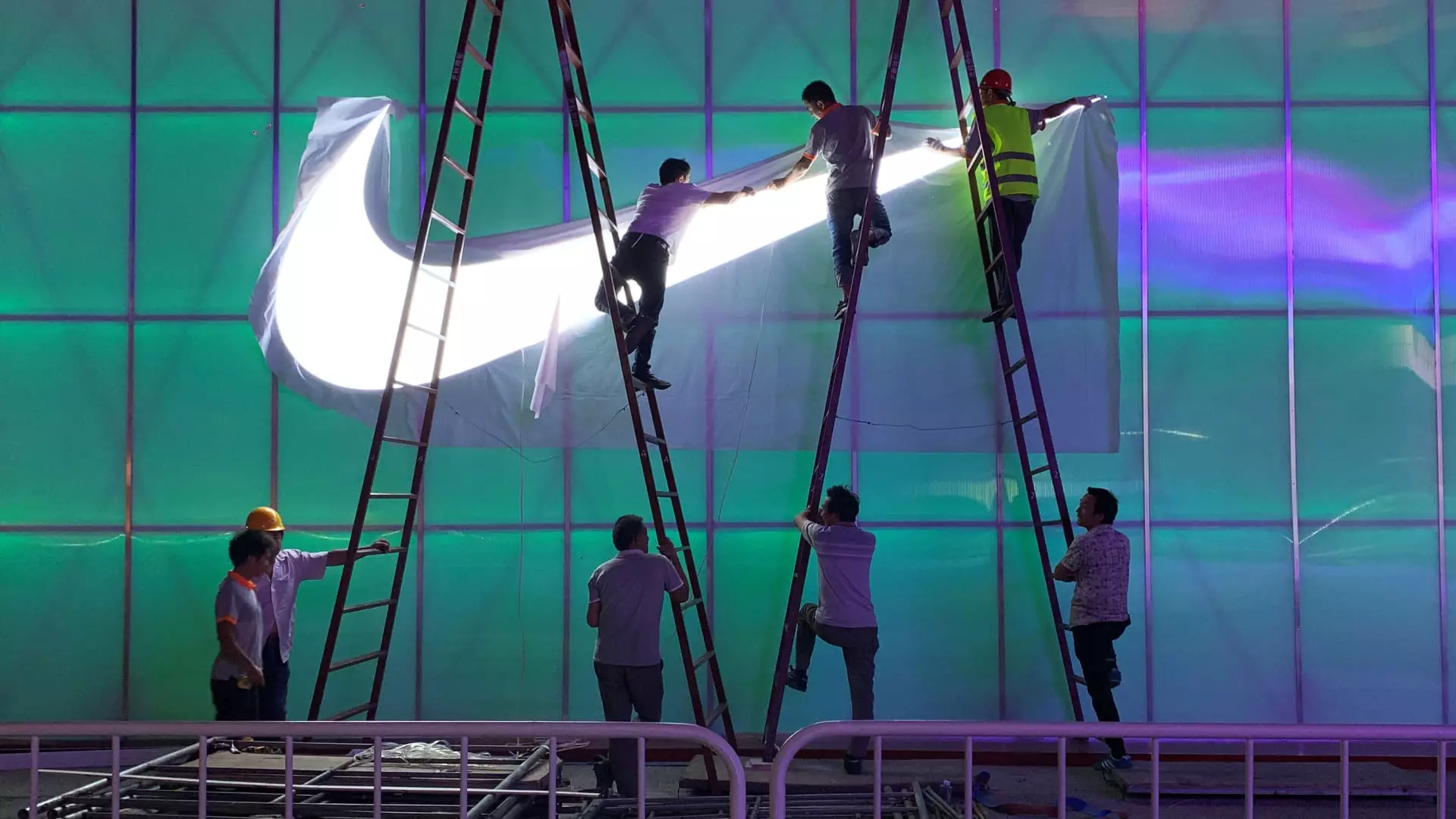In the current landscape of global commerce, the economic situation in China holds significant implications for international brands, particularly those operated by newly appointed CEOs Brian Niccol at Starbucks and Elliott Hill at Nike. These two high-profile executives are stepping into leadership positions at a pivotal moment, one where their companies face challenges that have been exacerbated by complications in the Chinese market. The potential success of China’s recent stimulus measures could play a crucial role in shaping the future of both companies as they navigate rebranding and strategic maneuvers.
The S&P 500’s tier of elite organizations reveals a stark reality: many U.S.-based companies have extensive financial exposure to the volatile Chinese economy. Reports from Bank of America indicate that Starbucks derives 8.6% of its sales from China, while that figure is even greater for Nike at 14.7%. For Niccol and Hill, the health of the Chinese economy isn’t just a regional concern; it’s integral to the financial viability and growth strategies of their organizations. As China undertakes substantial economic stimulus efforts designed to invigorate consumer spending, these new leaders may find themselves straddling a fine line between opportunity and risk.
Engaging with the Asian market has already prompted observable shifts within Starbucks, as evidenced by Niccol’s swift reassessment of his leadership team in China merely weeks into his tenure. Discussions among market analysts even point toward the potential for significant structural changes, such as forming joint ventures with domestic firms. Such measures could offer Starbucks a lifeline in a market that remains complex and competitive. For Nike, the focus on China seems to be unwavering despite tempered expectations for immediate growth. CFO Matthew Friend emphasized on a recent earnings call that although short-term prognosis might be cautious, the long-term prospect for sports participation in China remains promising.
However, these intentions must translate into actionable strategies. Simply exhibiting optimism won’t suffice, especially when both Starbucks and Nike encounter rising competition from local brands and increasing skepticism toward foreign entities among Chinese consumers. Low brand loyalty and heightened consumer awareness complicate the landscape, ultimately challenging both companies to rethink their marketing and supply chain strategies in the region.
While analysts speculate about positive shifts following the new leadership transitions, the reality remains that recovery in the consumer spending landscape is contingent upon the efficient execution of stimulus plans. The recent measures proposed by the Chinese government have primarily targeted real estate, leaving much ambiguity about how these will directly benefit consumer sentiment. As Ellen Hazen from F.L. Putnam articulated, optimism around the stimulus is cautious at best, and it could lead to a prolonged wait for tangible results, amplifying existing uncertainties for brands like Starbucks and Nike.
An opinion shared by market strategist Eric Clark highlights the hurdles that Nike must clear to regain its status as a burgeoning growth stock. Injecting innovation through new leadership is certainly a morale booster, but Clark also stresses the importance of focusing on meaningful execution instead of relying solely on optimistic projections about China.
Increasingly, global brands can no longer take their previous advantages in that dynamic market for granted. According to Bank of America analyst Chen Luo, the correlation between China’s economic rebound and sales figures for companies like Nike and Starbucks might not be as linear as once presumed. The new breed of Chinese consumers is demonstrating a marked preference for local offerings, raising questions about brand loyalty and the strategic approaches required to regain market share. The emotional resonance and functionality of products are becoming critical factors for these consumers, pointing to a significant shift in consumer behavior that can’t simply be addressed through traditional marketing tactics.
Ultimately, as both Starbucks and Nike grapple with their immediate futures, the North Star guiding their recovery efforts hinges on the efficacy of China’s stimulus program alongside their ability to adapt to rapidly evolving consumer landscapes. The dual challenge of revitalizing brand strength while maneuvering through economic uncertainty comes with the territory for Niccol and Hill. Their leadership could spell a new chapter for their respective companies, contingent upon keen market insight and innovative execution strategies that align with the sentiments of Chinese consumers. Enhanced engagement, deft brand repositioning, and a long-term viewpoint could catalyze a new growth story for Starbucks and Nike amidst the complexities that define the modern global marketplace.


Leave a Reply